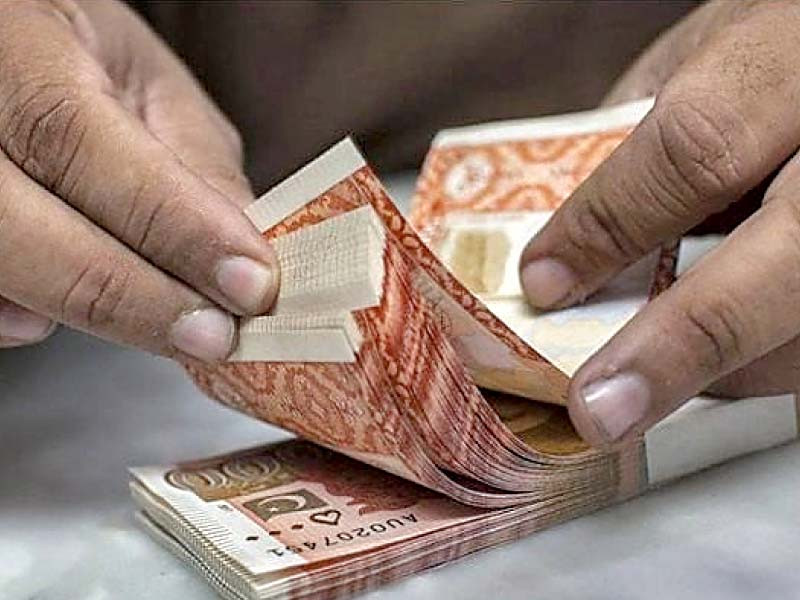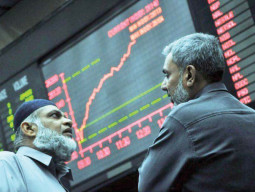
There’s an old adage that says, ‘Prepare for the worst and hope for the best.’ As Pakistan faces the twin challenges of rising oil prices and a declining rupee, this wisdom could not be more relevant. Being a nation that imports energy products, Pakistan annually incurs substantial costs, which amounted to $17 billion in the last financial year, to meet its demand for crude oil, Liquefied natural gas (LNG), and fuels such as petrol and diesel. The drop in the rupee’s value exacerbates the situation, making the import of these commodities even more costly in terms of PKR.
Despite a brief surge in the Pakistani rupee’s value against the US dollar following the International Monetary Fund (IMF) deal and capital inflows from friendly countries, the currency has weakened again, reverting to predeal levels of between Rs285 and Rs290 per dollar. This decline occurred even as the State Bank’s foreign exchange reserves doubled within a month, indicating that these factors alone were insufficient to strengthen the rupee. The easing of import restrictions has increased the demand for the dollar, likely putting pressure on the local currency.
Additionally, the rupee’s interbank rate is inching closer to the open market rate, suggesting a growing influence of market forces in determining the rupee’s value - a change that aligns with the IMF’s demands. Simultaneously, oil prices have risen, with Brent crude, the international benchmark, climbing from less than $75 a barrel in early May to $84 currently. Given the strong demand and constricted supplies, prices might remain elevated in the future.
The US and China, two of the world’s largest oil markets, may experience heightened demand. The US recently reported a substantial 17-million-barrel reduction in crude oil stockpiles within a single week as the nation’s refineries amplified oil processing to meet robust domestic and international fuel demand. Other regions have also witnessed decreases in crude oil stockpiles, signalling that demand is surpassing supply. Concurrently, China’s efforts to revive its economy may further increase oil demand. On the other hand, oil supplies have been constrained due to OPEC’s production cuts. Oil production from the Organisation of the Petroleum Exporting Countries (OPEC) fell by 900,000 barrels per day in July, according to a Bloomberg survey, which marked the largest drop in three years.
The group of oil-producing nations has scaled back output to support the oil market against the threat of an economic slowdown. The strong oil demand combined with restricted production may pave the way for future oil price increases. Such a situation could be particularly adverse for Pakistan, given the declining value of the rupee. While there’s a possibility that oil prices may fall in the future — especially if China’s recovery in oil demand fails to materialise or if the US slips into a recession, resulting in oil inventory accumulation — it cannot be overlooked that in such a case, OPEC might initiate another round of production cuts to support oil prices.
As a price-taker, Pakistan has little control over these variables and must be prepared to manage any scenario. If prices drop, that’s favourable; however, if they increase, Pakistan needs to be equipped to handle that as well. The key question policymakers must ponder over and prepare for is whether we are ready to face soaring oil prices coupled with a devalued currency. Regrettably, both the oil and gas exploration and production (E&P) and the oil refining industries — two critical suppliers of energy products — are currently grappling with difficulties. This problematic situation could place Pakistan in a difficult spot if oil prices continue to remain high or rise further.
This requires the urgent attention of policymakers. The oil refining sector, responsible for processing crude oil into fuels such as petrol, diesel, and jet fuel — thereby reducing the need to import these costly products — has faced significant pressure over the past few years due to a multitude of challenges. Issues like the slow upliftment of furnace oil, limited credit lines, import restrictions, excessive regulation, government-enforced prices, and a lack of policies conducive to business have severely hurt the industry’s performance. The country’s oil refineries have been facing significant financial and operational issues, resulting in a decline in production.
Similarly, the E&P industry has been grappling with a myriad of challenges. Among these are insufficient payments from Sui gas companies, resulting in a cash flow crisis. Then there’s the longstanding issue of the dominance of government-owned companies in this industry whose production volumes are declining, while there has been a complete lack of interest from the private sector, including foreign investors, in establishing new E&P companies and carrying out exploration work. These two industries have long been neglected, with growth stymied by unfavourable policies. The oil and gas sector’s issues must be addressed, putting them on a path to growth and development. It’s high time we act to reduce Pakistan’s unnecessarily inflated energy bill.
THE WRITER IS A CORPORATE CONSULTANT SPECIALISING IN BUSINESS AND ECONOMIC ISSUES, WITH A PARTICULAR EMPHASIS ON THE OIL SECTOR




1730959638-0/trump-(19)1730959638-0-165x106.webp)













COMMENTS
Comments are moderated and generally will be posted if they are on-topic and not abusive.
For more information, please see our Comments FAQ